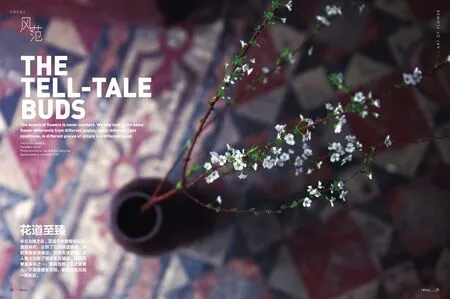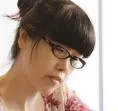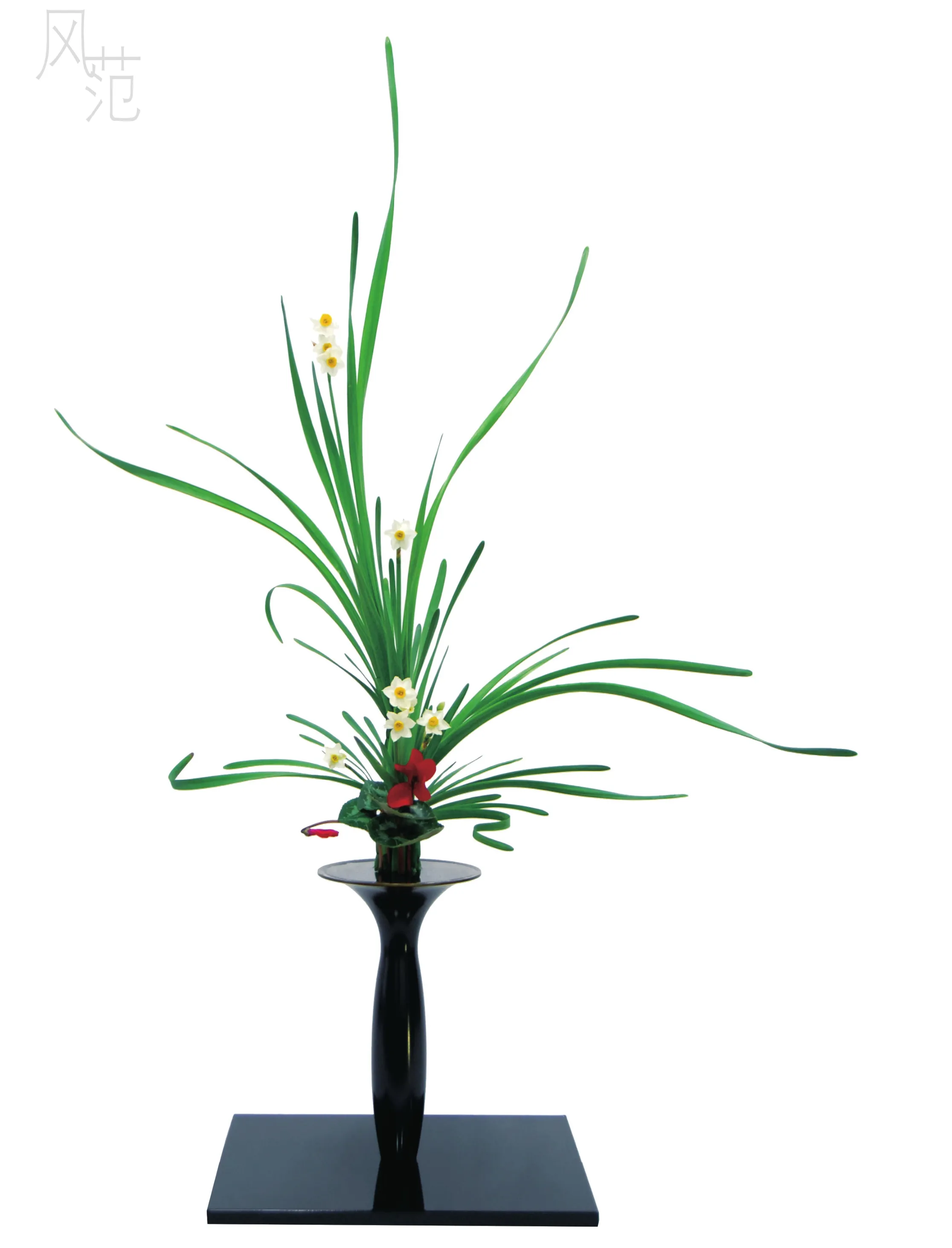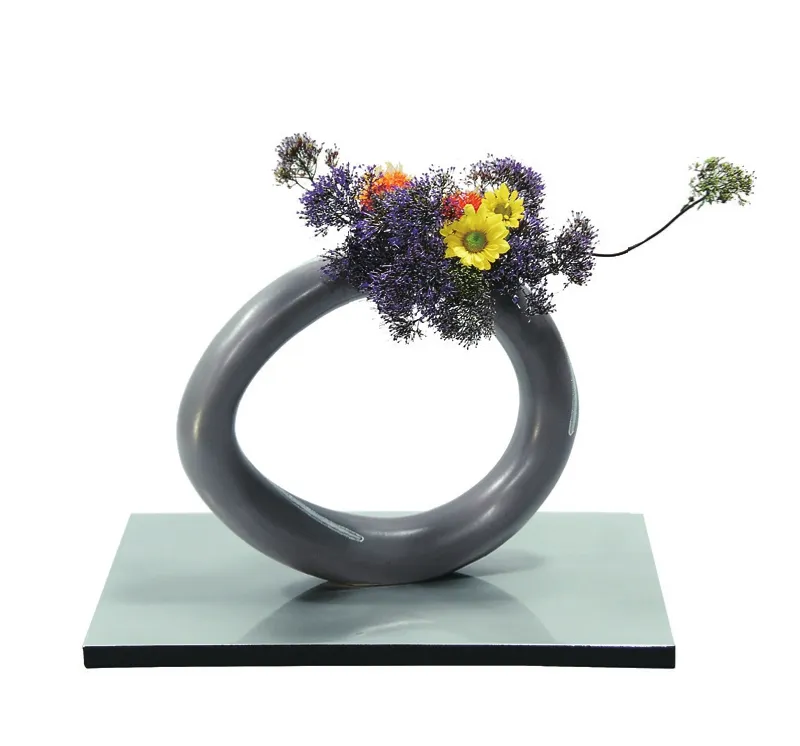THE TELL-TALE BUDS
2016-04-14TextbyGuoShaojingTranslationbyLeoPhotosprovidedbyGuoShaojingZengJianSpecialthankstoHeartbeatFlorist
Text by Guo Shaojing Translation by Leo Photos provided by Guo Shaojing, Zeng Jian Special thanks to Heartbeat Florist
THE TELL-TALE BUDS
Text by Guo Shaojing Translation by Leo Photos provided by Guo Shaojing, Zeng Jian Special thanks to Heartbeat Florist
The beauty of flowers is never constant. We may look at the same flower differently from different angles, under different light
conditions, in different places or simply in a different mood.
花道至臻
早在北魏之后,花道在中国慢慢兴起,直到宋代,达到了它的鼎盛巅峰。当时国家政局稳定,百姓生活安康,文人雅士们多了很多生活情趣,而插花便是其中之一。据闻当时上至达官贵人,下至普通老百姓,家里都能见到一两瓶花。

Floral arrangement in the West means an entirely different thing from the art of Ikebana in the East. In the West, flower arrangement - in the real sense of the word “arrangement” - is more like a decorative practice while its Oriental counterpart, Ikebana (which means “fl owers kept alive”), is a way of self-expression. The former is most often for commercial purposes while the latter is often used as a form of artistic education and mental development.
The art of flower arranging saw its best days in China’s Ming dynasty (1368-1644) when it spread to Japan through a book named A History of Vased Flower Arrangements by Yuan Hongdao, a scholar living in late Ming dynasty. The art soon took root in Japan and grew quickly under the name of Ikebana in the Meijiperiod (1868-1912), when the Japanese economy took off. In fact, Ikebana developed so well in Japan that it replaced its Chinese predecessor to become the representative of the Oriental art. Today, the ancient art is beginning a revival in China and Chinese Ikebana artists are doing their part to restore its past glory.
The art of Ikebana or “the way of flowers” is much more than just about arranging flowers. A lot has to be learnt about flowers and plants, broader nature and human life. It is about understanding and appreciating the very nature, essence and spirit of flowers and plants (their stems, leaves, petals etc.) in different seasons and across every stage of their life cycles. Mother Nature has a rich supply of everything that the human body and spirit needs to be nurtured. And she has her rules: each flower and plant has its season or seasons for life. Missing one, you must wait, perhaps with eagerness, for its next appearance.
Learning Ikebana is also a process of development of the inner self. To achieve that, good character is required. As a guqin master rightly put it, “My teacher’s advice is that the character of a guqin player speaks to the character of his playing. The nurturing of virtue accounts for 70% of guqin learning, while actual techniques only make up 30%. One cannot go far in the pursuit of the art by acquiring skills without nurturing his virtue.” The same is true of learning Ikebana. An Ikebana florist with lesser virtue produces products of lower quality.
Flowers and plants are wonderful beings to me. So the way I often look at, feel, describe and represent them is similar to the way that I treat human beings. Sometimes my students cut leaves and branches of plants or flowers from their own gardens and bring them to me. I hate to waste any piece of them, not even a leaf. It seems to me that they are the gifts of nature and require a simple heart to understand. An Ikebana practitioner needs to develop this kind of mindset to see value in things and understand that his or her job is to give new life and a new form of beauty, both artistically and culturally, to the cuttings of flowers and plants.
Art is the third eye through which human beings see the world. It can enrich our minds and ease our lives. Ikebana as a form of art education enables us to better see ourselves through nature and make it a part of our lives. Indeed, the art of Ikebana is always more about our heart and soul, not just the fl owers.
AUTHOR PROFlLE

Guo Shaojing, 1st Grade Professor of Ikebana, author of Flower of Life“If one day I become an old woman, greyhaired but still graceful and innocent like a child, that must be the good that flowers have done to me.”
郭少静,华道家元池坊正教授一级,著有《我的插花生活》等“当我老去,成为一名满头白发,却满是童心的优雅老太,一定是因为花卉赋予我生命的平和沉静。”



花之美千变万化。不同的角度,不同的光线,不同的场所,观察者不同的情绪,看到的花都将是不同的。
东西方的插花艺术是两种截然不同的插花表现形式。西方插花用的是“arrangement”这个单词,意为“整理,安排”,指用花进行室内装饰设计等;而东方插花的英译为“ikebana”,是通过花表现个人的存在。前者在我们的生活中,较多为商业用途存在,而后者更多地是作为艺术教育和自我修养的提升而存在。
明代是中国插花其中一个繁盛时期。袁宏道的《瓶史》一书传入日本后,日本花道以此为契机并借助之后的明治维新创造的经济崛起而飞速发展。此后日本花道取代中国插花成为东方插花的代表。而中国当下的花道人,也正在为中国插花的复苏从自身开始做大量努力。
花道,除了“插”花这个动作,大约还有人透过对植物,对自然界的学习,反映到你生活中的相关。而什么又是对植物的学习呢?一朵花,一片叶随着季节的变迁,开放,凋零,四季轮回,展现出的自然属性和精气神。自然界提供了我们身体和精神所需的一切。每个季节都有不同的植物,错过了就需要等待,就会让心更有期盼,越发珍惜对待花开。
习练花道,也是内心自我成长的过程。所以何为“道”,除了以上,大约还有“品”。琴人作景利先生说:“人品即琴品,此先生之训!古琴不论何派,技占其三,德占其七。只学技而不习德,终为下品。”学花道也为同理。插花者的心不正,花也无法达至境界。
在我眼里,花花草草都是极具魅力的生命,我常用拟人的方式去感受它们,描述它们,并始终呈现它们。有时候学生将自家花园里的花草剪下来带给我,我一片叶子也不舍得浪费。世间的花草,都是自然物界的馈赠,它需要你有一颗单纯的心去读懂它。这也是花道之人所需懂得的惜物之心。从土地上剪下的花草,并非结束植物的生命,而是用文学、美术、艺术等多方面的修养,赋予植物第二次生命,以另一种姿态诠释美。
艺术是人类看待世界的第三只眼,可以让人在精神上变得丰盈,在人生中获得从容优雅的姿态。花道作为艺术教育的一种方式,让我们从自然界反观自身,把自然纳入自己的生活之中。
花道整理的从来都不是花,而是心灵。
